 |
by Mat Honan on (#6GD5D)
In San Francisco last week, everyone's favorite surprise visitor was Microsoft CEO Satya Nadella. At OpenAI's DevDay-the company's first-ever event for developers building on its platform-Nadella bounded on stage to join OpenAI CEO Sam Altman, blowing the hair back on an already electrified audience. You guys have built something magic," he gushed. Two days later...
|
MIT Technology Review
| Link | https://www.technologyreview.com/ |
| Feed | https://www.technologyreview.com/stories.rss |
| Updated | 2025-12-20 06:03 |
 |
by Rhiannon Williams on (#6GCY0)
This is today's edition ofThe Download,our weekday newsletter that provides a daily dose of what's going on in the world of technology. Is it possible to really understand someone else's mind? Technically speaking, neuroscientists have been able to read your mind for decades. It's not easy, mind you. First, you must lie motionless within a...
|
 |
by Zeyi Yang on (#6GCVK)
This story first appeared in China Report, MIT Technology Review's newsletter about technology in China.Sign upto receive it in your inbox every Tuesday. This is going to be a BIG week for US-China relations: On Wednesday, Xi Jinping will sit down with Joe Biden in San Francisco and talk about military issues, trade, and more....
|
 |
by Grace Huckins on (#6GCVM)
Technically speaking, neuroscientists have been able to read your mind for decades. It's not easy, mind you. First, you must lie motionless within the narrow pore of a hulking fMRI scanner, perhaps for hours, while you watch films or listen to audiobooks. Meanwhile, the machine will bang and knock as it records the shifting patterns...
|
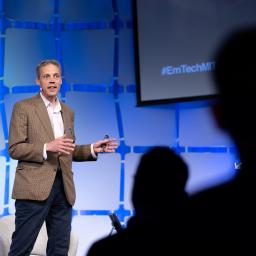 |
by Niall Firth on (#6GC6H)
EmTech MIT, MIT Technology Review's flagship event on emerging technology and global trends is November 14-15, 2023. This year's event looks at the AI, biotech, and climate innovations and the new rules of business. You can sign up and watch it live here.
|
 |
by Melissa Heikkilä on (#6GC6J)
This year the Earth has been hit by a record number of unpredictable extreme weather events made worse by climate change. Predicting them faster and with greater accuracy could enable us to prepare better for natural disasters and help save lives. A new AI model from Google DeepMind could make that easier. In research published...
|
 |
by Rhiannon Williams on (#6GC0D)
This is today's edition ofThe Download,our weekday newsletter that provides a daily dose of what's going on in the world of technology. How did life begin? How life begins is one of the biggest and hardest questions in science. All we know is that something happened on Earth more than 3.5 billion years ago, and...
|
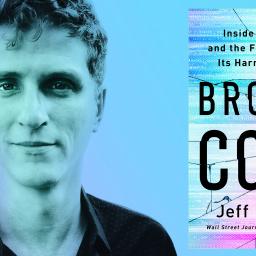 |
by Jeff Horwitz on (#6GC0E)
The following is excerpted from BROKEN CODE: Inside Facebook and the Fight to Expose Its Harmful Secrets by Jeff Horwitz. Reprinted by permission of Doubleday, an imprint of The Knopf Doubleday Publishing Group, a division of Penguin Random House LLC. Copyright (C) 2023 by Jeff Horwitz. In 2006, the U.S. patent office received a filing...
|
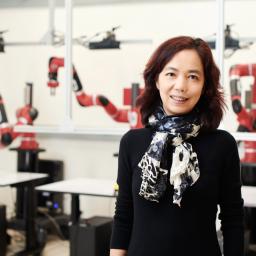 |
by Melissa Heikkilä on (#6GC0F)
This story originally appeared in The Algorithm, our weekly newsletter on AI. To get stories like this in your inbox first, sign up here. This moment in AI is an inflection moment," Fei-Fei Li told me recently. Li is co-director of Stanford's Human-Centered AI Institute and one of the most prominent computer science researchers of...
|
 |
by Michael Marshall on (#6GBY8)
How life begins is one of the biggest and hardest questions in science. All we know is that something happened on Earth more than 3.5 billion years ago, and it may well have occurred on many other worlds in the universe as well. But we don't know what does the trick. Somehow a soup of...
|
 |
by Rhiannon Williams on (#6GB50)
This is today's edition ofThe Download,our weekday newsletter that provides a daily dose of what's going on in the world of technology. Are we alone in the universe? The quest to determine if anyone or anything is out there has gained greater scientific footing over the past 50 years. Back then, astronomers had yet to...
|
 |
by Tate Ryan-Mosley on (#6GB2H)
This article is from The Technocrat, MIT Technology Review's weekly tech policy newsletter about power, politics, and Silicon Valley. To receive it in your inbox every Friday, sign up here. Highly personal and sensitive data about military members, such as home addresses, health and financial information, and the names of family members and friends, is...
|
 |
by Adam Mann on (#6GB0B)
In 1977, the New York Times published an article titled Seeking an End to Cosmic Loneliness," describing physicists' attempts to pick up radio messages from aliens. The endeavor, known as the Search for Extraterrestrial Intelligence (SETI), was still in its early stages, and its proponents were struggling to persuade their peers and Congress that the...
|
 |
by Rhiannon Williams on (#6G971)
This is today's edition ofThe Download,our weekday newsletter that provides a daily dose of what's going on in the world of technology. How open-source drug discovery could help us in the next pandemic When the covid pandemic hit, our antiviral coffers were bare. After all, developing drugs for diseases that don't pose an immediate threat...
|
 |
by Cassandra Willyard on (#6G92G)
This article first appeared in The Checkup, MIT Technology Review's weekly biotech newsletter. To receive it in your inbox every Thursday, and read articles like this first,sign up here. When the covid pandemic hit, our antiviral coffers were essentially bare. Sure, pharmaceutical companies had developed drugs to combat influenza and a handful of chronic infections....
|
 |
by MIT Technology Review Insights on (#6G8B7)
Customer experience (CX) is a leading driver of brand loyalty and organizational performance. According to NTT's State of CX 2023 report, 92% of CEOs believe improvements in CX directly impact their improved productivity, and customer brand advocacy. They also recognize that the quality of their employee experience (EX) is critical to success. The real potential...
|
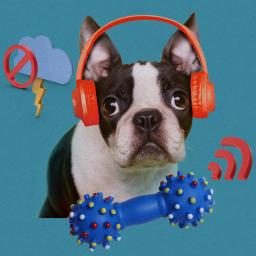 |
by Rhiannon Williams on (#6G88Q)
This is today's edition ofThe Download,our weekday newsletter that provides a daily dose of what's going on in the world of technology. Noise-canceling headphones could let you pick and choose the sounds you want to hear The news: A new system for noise-canceling headphones lets users opt back in to certain sounds they'd like to...
|
 |
by Casey Crownhart on (#6G83T)
This article is from The Spark, MIT Technology Review's weekly climate newsletter. To receive it in your inbox every Wednesday, sign up here. The waiter lifted the lid with a flourish. Inside the gold-detailed ceramic container, on a bed of flower petals, rested a small black plate cradling two bits of chicken. Each was coated...
|
 |
by Rhiannon Williams on (#6G83V)
This is a subscriber-only story. Future noise-canceling headphones could let users opt back in to certain sounds they'd like to hear, such as babies crying, birds tweeting, or alarms ringing. The technology that makes it possible, called semantic hearing, could pave the way for smarter hearing aids and earphones, allowing the wearer to filter out...
|
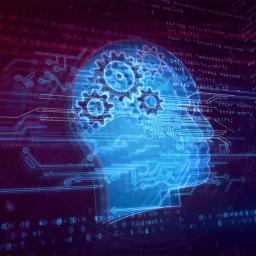 |
by David Kang on (#6G7BV)
Machine learning (ML) is now mission critical in every industry. Business leaders are urging their technical teams to accelerate ML adoption across the enterprise to fuel innovation and long-term growth. But there is a disconnect between business leaders' expectations for wide-scale ML deployment and the reality of what engineers and data scientists can actually build...
|
 |
by Rhiannon Williams on (#6G78G)
This is today's edition ofThe Download,our weekday newsletter that provides a daily dose of what's going on in the world of technology. Why Hong Kong is still bullish on crypto While Sam Bankman-Fried was waiting for the jury in his fraud trial to return their verdict last week, Hong Kong FinTech Week 2023, a new...
|
 |
by Zeyi Yang on (#6G73G)
This story first appeared in China Report, MIT Technology Review's newsletter about technology in China.Sign upto receive it in your inbox every Tuesday. We were far from the courtroom where Sam Bankman-Fried was found guilty on seven criminal charges, but everyone still wanted to talk about him. That said, I have a feeling the conversations...
|
by Rhiannon Williams on (#6G69D)
This is today's edition ofThe Download,our weekday newsletter that provides a daily dose of what's going on in the world of technology. A man with Parkinson's regained the ability to walk thanks to a spinal implant The news: A man with Parkinson's disease has regained the ability to walk after physicians implanted a small device...
by Abdullahi Tsanni on (#6G5FV)
A man with Parkinson's disease has regained the ability to walk after physicians implanted a small device into his spinal cord that sends signals to his legs. I can now walk with much more confidence and my daily life has profoundly improved," said the patient, a 62-year-old named Marc, during a press conference. Marc is...
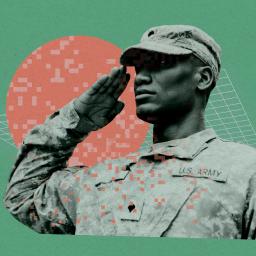 |
by Rhiannon Williams on (#6G59P)
This is today's edition ofThe Download,our weekday newsletter that provides a daily dose of what's going on in the world of technology. It's shockingly easy to buy sensitive data about US military personnel For as little as $0.12 per record, data brokers in the US are selling sensitive private data about both active-duty military members...
|
 |
by Tate Ryan-Mosley on (#6G57C)
For as little as $0.12 per record, data brokers in the US are selling sensitive private data about active-duty military members and veterans, including their names, home addresses, geolocation, net worth, and religion, and information about their children and health conditions. In a unsettling study published on Monday, researchers from Duke University approached 12 data...
|
 |
by Tate Ryan-Mosley on (#6G55H)
This article is from The Technocrat, MIT Technology Review's weekly tech policy newsletter about power, politics, and Silicon Valley. To receive it in your inbox every Friday, sign up here. On October 30, President Biden released his executive order on AI, a major move that I bet you've heard about by now. If you want...
|
 |
by Rhiannon Williams on (#6G3C7)
This is today's edition ofThe Download,our weekday newsletter that provides a daily dose of what's going on in the world of technology. Inside NASA's bid to make spacecraft as small as possible Since the 1970s, we've sent a lot of big things to Mars. But when NASA successfully sent twin Mars Cube One spacecraft, the...
|
 |
by Cassandra Willyard on (#6G37T)
This article first appeared in The Checkup, MIT Technology Review's weekly biotech newsletter. To receive it in your inbox every Thursday, and read articles like this first,sign up here. Ahhh, fall. The leaves are changing. The air is crisp. And according to the CDC, RSV is on the rise. This year we were supposed to...
|
 |
by MIT Technology Review Insights on (#6G2NV)
When considering the potential for AI systems to change manufacturing, Ritu Jyoti, global AI research lead at market-intelligence firm IDC, points to windmill manufacturers. To improve windmills before AI, she says, the company analyzed data from observing a functioning prototype, a process that took weeks. Now, the manufacturer has dramatically shortened the process using a...
|
 |
by Rhiannon Williams on (#6G2ET)
This is today's edition ofThe Download,our weekday newsletter that provides a daily dose of what's going on in the world of technology. How a tiny Pacific Island became the global capital of cybercrime Tokelau, a string of three isolated atolls strung out across the Pacific, is so remote that it was the last place on...
|
 |
by James Temple on (#6G2CM)
This article is from The Spark, MIT Technology Review's weekly climate newsletter. To receive it in your inbox every Wednesday, sign up here. There are growing signs of trouble for the multibillion-dollar global carbon market, as investigative stories and studies continue to erode the credibility of the business world's go-to tool for cleaning up climate...
|
 |
by Jacob Judah on (#6G2AE)
Tokelau, a necklace of three isolated atolls strung out across the Pacific, is so remote that it was the last place on Earth to be connected to the telephone-only in 1997. Just three years later, the islands received a fax with an unlikely business proposal that would change everything. It was from an early internet...
|
by MIT Technology Review Insights on (#6G1NJ)
It's a stormy holiday weekend, and you've just received the last notification you want in the busiest travel week of the year: the first leg of your flight is significantly delayed. You might expect this means you'll be sitting on hold with airline customer service for half an hour. But this time, the process looks...
 |
by Rhiannon Williams on (#6G1F1)
This is today's edition ofThe Download,our weekday newsletter that provides a daily dose of what's going on in the world of technology. What are the hardest problems in tech we should be more focused on as a society? Technology is all about solving big thorny problems, yet one of the hardest things is knowing where...
|
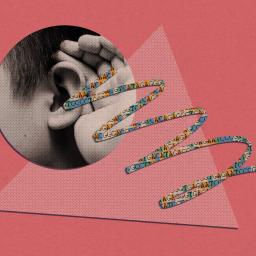 |
by Zeyi Yang on (#6G1CR)
This story first appeared in China Report, MIT Technology Review's newsletter about technology in China.Sign upto receive it in your inbox every Tuesday. Last week, I worked with my colleague Antonio Regalado, our senior editor for biomedicine, to break a truly inspiring and honestly kind of wild story: Chinese scientists used gene therapy to restore...
|
 |
by The Editors on (#6G1CS)
Technology is all about solving big thorny problems. Yet one of the hardest things about solving hard problems is knowing where to focus our efforts. There are so many urgent issues facing the world. Where should we even begin? So we asked dozens of people to identify what problem at the intersection of technology and...
|
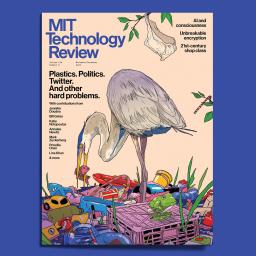 |
by Mat Honan on (#6G1CT)
For all of history we've turned to technology, again and again, to help us solve our hardest problems. Technology gave us warmth and light when it was cold and dark. It helped us pull fish from the sea and crops from the earth so we would not be hungry. It enabled us to cross over...
|
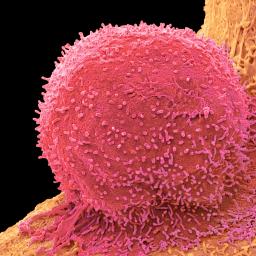 |
by Cassandra Willyard on (#6G1CV)
Over the past few years, the treatment of some hard-to-treat blood cancers has been revolutionized by therapies based on engineered T cells, which leverage the patient's own immune system to destroy cancerous cells. But until recently researchers haven't had much luck developing these T-cell therapies-called CAR T-for solid tumors, which make up the vast majority...
|
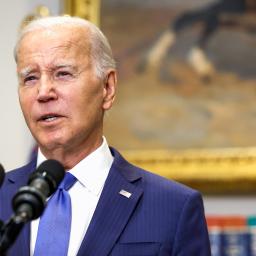 |
by Rhiannon Williams on (#6G0FE)
This is today's edition ofThe Download,our weekday newsletter that provides a daily dose of what's going on in the world of technology. Three things to know about the White House's executive order on AI The US has set out its most sweeping set of AI rules and guidelines yet in an executive order issued by...
|
 |
by Melissa Heikkilä on (#6G0CV)
This story originally appeared in The Algorithm, our weekly newsletter on AI. To get stories like this in your inbox first, sign up here. This week everyone is talking about AI. The White House just unveiled a new executive order that aims to promote safe, secure, and trustworthy AI systems. It's the most far-reaching bit...
|
 |
by Tate Ryan-Mosley, Melissa Heikkilä on (#6FZQX)
MIT Technology Review Explains: Let our writers untangle the complex, messy world of technology to help you understand what's coming next.You can read more from the series here. The US has set out its most sweeping set of AI rules and guidelines yet in an executive order issued by President Joe Biden today. The order...
|
 |
by Rhiannon Williams on (#6FZDR)
This is today's edition ofThe Download,our weekday newsletter that provides a daily dose of what's going on in the world of technology. Joy Buolamwini: We're giving AI companies a free pass" AI researcher and activist Joy Buolamwini is best known for a pioneering paper she co-wrote with Timnit Gebru in 2017 which exposed how commercial...
|
 |
by Tate Ryan-Mosley on (#6FZDS)
This article is from The Technocrat, MIT Technology Review's weekly tech policy newsletter about power, politics, and Silicon Valley. To receive it in your inbox every Friday, sign up here. Dozens of states suedMeta on October 24, claiming that the company knowingly harms young users.The caseis a pretty big deal and will almost certainly have...
|
 |
by Charlotte Jee on (#6FZDT)
This is an excerpt from Unmasking AI: My Mission to Protect What Is Human in a World of Machines by Joy Buolamwini, published on October 31 by Random House. It has been lightly edited. The term x-risk" is used as a shorthand for the hypothetical existential risk posed by AI. While my research supports the...
|
 |
by Melissa Heikkilä on (#6FYZQ)
Joy Buolamwini, the renowned AI researcher and activist, appears on the Zoom screen from home in Boston, wearing her signature thick-rimmed glasses. As an MIT grad, she seems genuinely interested in seeing old covers of MIT Technology Review that hang in our London office. An edition of the magazine from 1961 asks: Will your son...
|
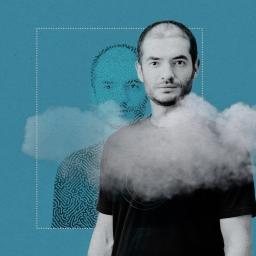 |
by Rhiannon Williams on (#6FXFM)
This is today's edition ofThe Download,our weekday newsletter that provides a daily dose of what's going on in the world of technology. Ilya Sutskever, OpenAI's chief scientist, on his hopes and fears for the future of AI Ilya Sutskever, OpenAI's cofounder and chief scientist, is no longer focusing on building the next generation of his...
|
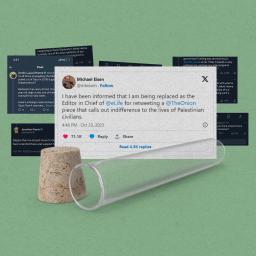 |
by Antonio Regalado on (#6FXDB)
This article first appeared in The Checkup, MIT Technology Review's weekly biotech newsletter. To receive it in your inbox every Thursday, and read articles like this first, sign up here. We don't usually delve into war and politics here in The Checkup, but this week is an exception. The spreading human devastation of the Israel-Gaza...
|
 |
by Antonio Regalado, Zeyi Yang on (#6FXBD)
Here's the easy game Li Xincheng has been playing at home. Her mother says a few words. Then the six-year-old, nicknamed Yiyi, repeats what she heard. Clouds, one by one, blossomed in the mountains," says her mother, Qin Lixue, while covering her mouth so Yiyi can't read her lips. Clouds, one, one, blossomed in big...
|
 |
by Will Douglas Heaven on (#6FWSF)
Ilya Sutskever, head bowed, is deep in thought. His arms are spread wide and his fingers are splayed on the tabletop like a concert pianist about to play his first notes. We sit in silence. I've come to meet Sutskever, OpenAI's cofounder and chief scientist, in his company'sunmarked office building on an unremarkable street in...
|